Restoring Reynolda’s Century-Old Roof
The half-mile vista through Reynolda’s main gate to the bungalow has remained little changed since 1917. The broad green roof, punctuated with volcanic fieldstone chimneys, gives only a hint of what awaits after a sinuous drive along a former golf course and through dense rhododendron thickets.
This bait-and-switch has a long tradition in Anglo-American country estates; as one famous designer put it, “The eye will often see with more pleasure a rude chimney in the distance, its wisps of gray smoke wafting out of the forest into the blue sky above, than an entire palace exposed to view on every side, without any enlivening interruption or gentle touch of nature’s embrace.”
Though this vista has remained little changed for more than a century, a new feature could be seen embracing the house in July 2021: scaffolding across the central block.
This temporary addition marked the start of Reynolda’s $1.7 million rehabilitation project to restore the signature green tiles that have been on the roof since its inception. Fifty-four individual, corporate, and governmental donors supported this once-in-a-century effort.
Protecting the house since World War I, the bungalow’s roof is made up of 35,000 clay tiles weighing in at 77.33 tons, roughly the equivalent of thirteen adult elephants or forty-two midsize cars. Reynolda matriarch Katharine Reynolds ordered Ludowici’s Imperial tile style in three shades of green: light, medium, and dark. From a distance, the shades blend into a muted green tone resembling the patina of aged copper.
To maintain the color and character of the roof, Reynolda used the same Ludowici Tile Company chosen by Katharine Reynolds more than a hundred years ago.
With the expertise of Baker Roofing and Ludowici, Reynolda completed the milestone restoration in November 2021. Construction management was coordinated by the Frank L. Blum Construction Company and included the replacement of three large HVAC units in the historic house. This was the third major partnership between Reynolda House and Blum Construction.
Watch this Baker Roofing video to learn more about the process of restoring and preserving the treasured Reynolda House roof:


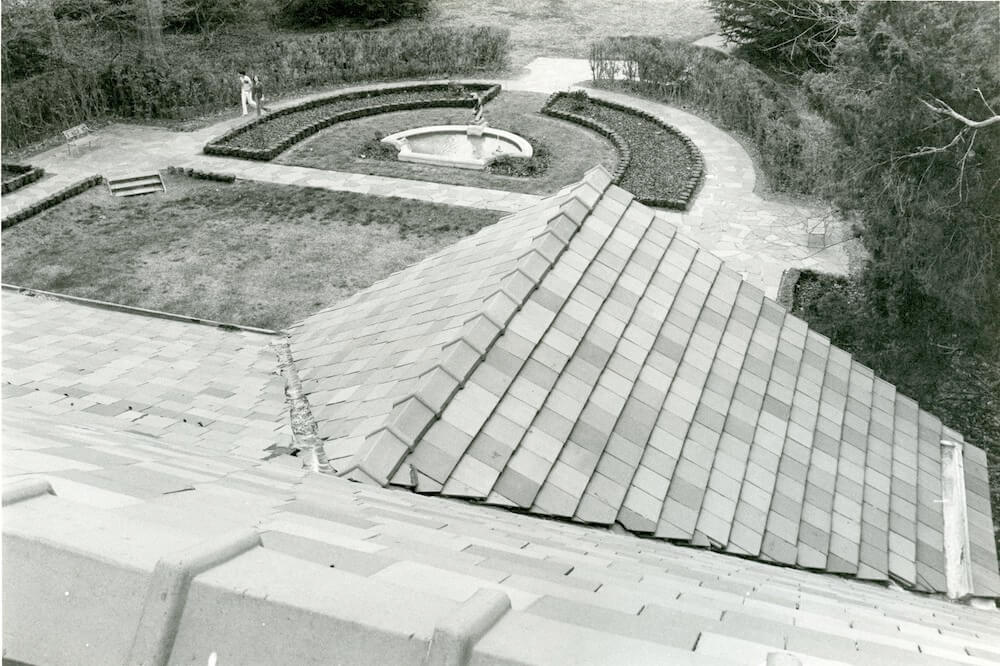
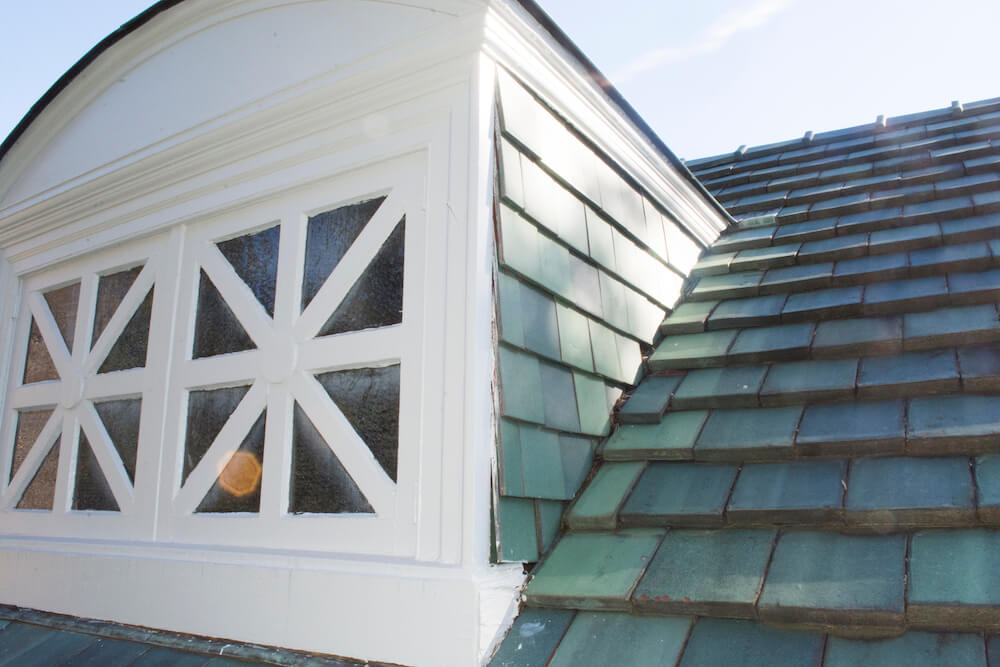






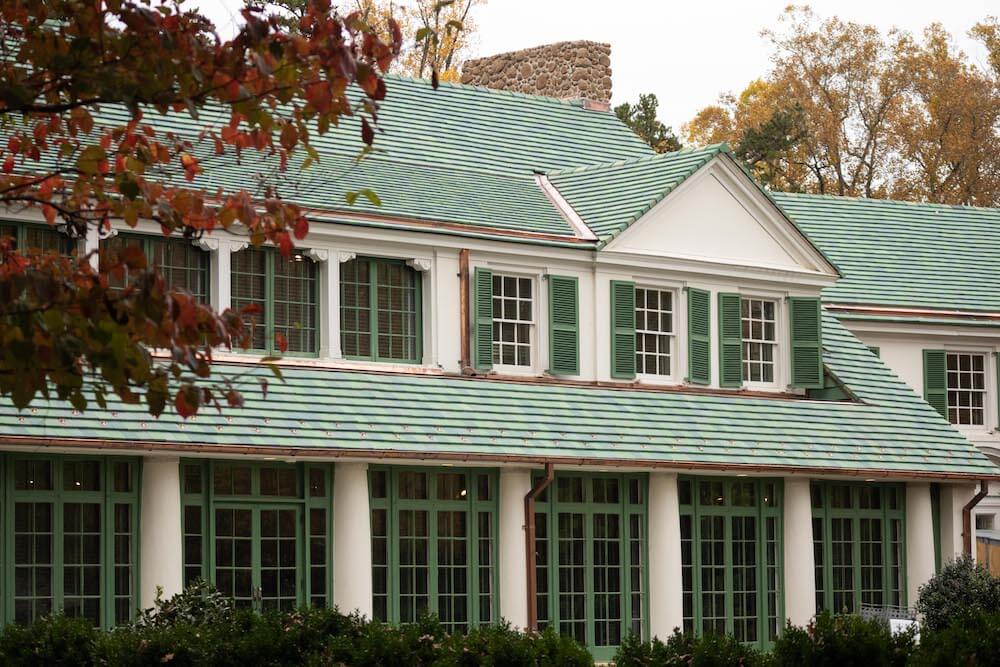

The People Who Made It Possible Then & Now
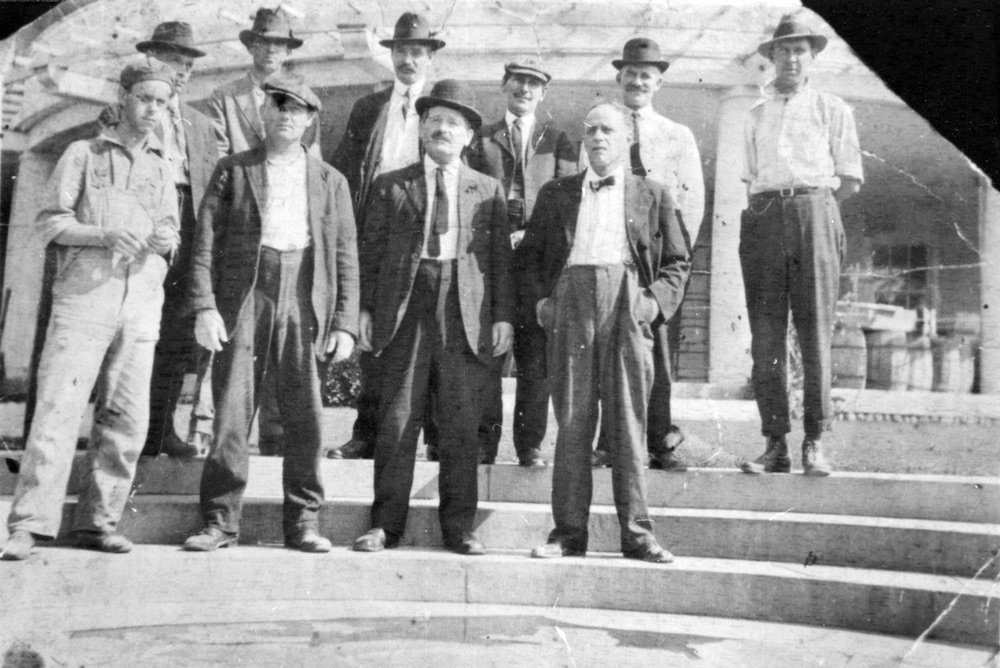
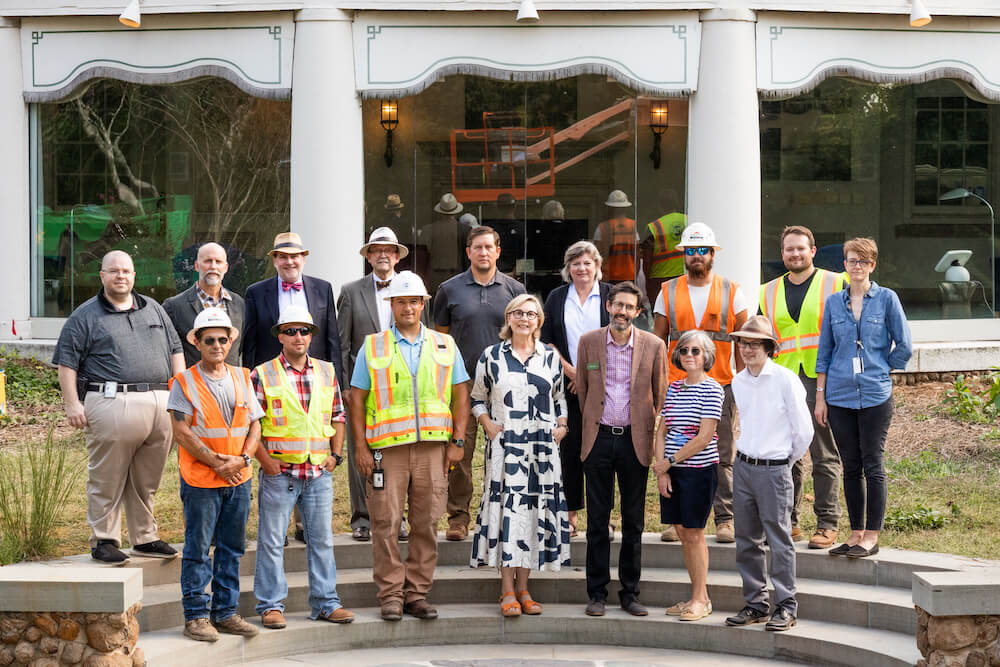
Abbreviated Timeline
March 2018
Reynolda House was awarded a $420,000 Infrastructure and Capacity Building Challenge Grant by the National Endowment for the Humanities to fund a portion of the roof rehabilitation project. Reynolda’s award came in the first year of the NEH’s infrastructure program and was the largest federal grant awarded in Museum history.
September 2019-June 2021
Raise the Roof: Restoring Reynolda’s Historic Roof exhibition was on view in the historic house. The exhibition told the roof’s historic preservation story through photographs, manuscripts, and aerial videography.
May 2021
In preparation for the renovation, Miller Tree Service removed eight trees overhanging the bungalow, including two Southern magnolia trees facing the Lake Katharine wetland and six red cedar trees on both sides of the bungalow.
July 2021
Scaffolding was erected and roof restoration began. Ludowici’s clay tiles arrived, and Baker Roofing began removing the existing tiles.
August 2021
Tile replacement was slightly ahead of schedule with Baker Roofing employees working early mornings and many Saturdays. Original roof tiles removed during the rehabilitation were available to purchase in the Museum store.
September 2021
Tilework, masonry repair, and new copper guttering were completed on both the central block and the east wing of Reynolda House.
October 2021
Tile replacement began on the fourth and final section of the roof. Baker Roofing began with the central block, then moved to the east wing, then completed the 1936 guest house.
November 2021
The rehabilitation of the roof was officially completed! On November 5, Reynolda hosted a celebration picnic for its staff and Blum Construction and Contractors to mark the milestone. Work continued through December on the replacement of HVAC units within the attics of the historic house.